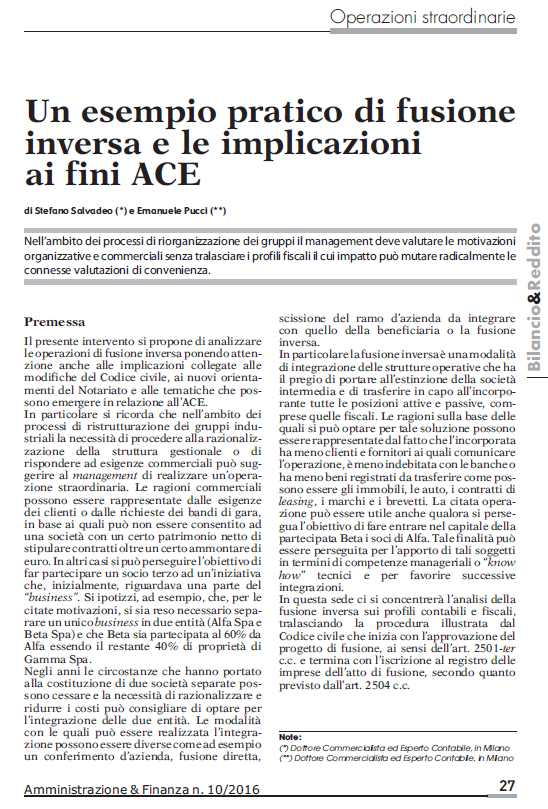-
Transactional advisory services
Find out more about the transactional advisory services of Grant Thornton Financial Advisory Services
-
Valuations
Find out more about the valuations services of Grant Thornton Financial Advisory Services
-
Mergers and acquisitions
Find out more about the merger and acquisition services of Grant Thornton Financial Advisory Services
-
Forensic and investigation services
Find out more about the forensic and investigation services of Grant Thornton Financial Advisory Services
-
Recovery & reorganisation
Find out more about the Recovery & reorganisation services of Grant Thornton Financial Advisory Services
-
Business risk services
Find out more about the business risk services of Grant Thornton Financial Advisory Services
-
Business consulting
Find out more about the business consulting services of Grant Thornton Financial Advisory Services
-
Capital market
Capital market
-
Corporate and business tax
Find out more about our corporate and business tax services.
-
Direct international tax
Find out more about our direct international tax services.
-
Global mobility services
Find out more about our global mobility services.
-
Indirect international tax
Find out more about our indirect international tax services.
-
Transfer pricing
Find out more about our transfer pricing services.
-
Litigation
Our lawyers and accountants can manage all defense measures provided not only by the Italian law, but also by EU regulations and conventions
-
Family business
Find out more about our Family business services.
-
Legal
The client can be assisted in every need and with the same care both on important operations or disputes and on simple matters

-
Back office outsourcing
Find out more about our Back office outsourcing services
-
Business process outsourcing
Find out more about our business process outsourcing services.
-
Compilation of financial statements
Find out more about our compilation of financial statements services.
-
Tax compliance
Find out more about our tax compliance services.
-
Electronic invoicing
Find out more about our electronic invoicing services
-
Electronic storage
Electronic storage is an archiving procedure that guarantees the legal validity of a digitally stored electronic document
-
Revaluation of corporate assets
Find out your civil and fiscal revaluation of tangible, intangible and financial assets
-
Payroll
Complete and customized payroll service, integrated with digital solutions and compliant with Italian and international regulations.
-
Labor consultancy
We help Italian and international companies manage all aspects of their workforce.
-
HR & Payroll Advisory Services
We review contracts, payroll, and risks for extraordinary transactions and we assess tax, labor, and safety risks in outsourcing contracts.
-
Extended services
We provide integrated digital tools to simplify HR management.
-
HR Infinity Portal
The HR Infinity Portal is Zucchetti’s platform designed to centralize communication between the company and its employees.
-
Cybersecurity
GT Digital helps clients structure information security management internal functions, also through partially or totally outsourced functions
-
Agile and Programme Management
GT Digital provides support in the adoption and implementation of different portfolio management
-
Robotic Process Automation
Our “BOT Farm” can rely on digital workers able to help clients in routine activities, allowing employees to deal with more added-value activities
-
Data strategy and management
GT Digital can support clients in seizing the opportunities offered by Big Data, from the definition of strategies to the implementation of systems
-
Enterprise Resource Planning
We support clients in selecting the most appropriate ERP System according to their specific needs, helping them also understand licensing models
-
IT strategy
GT Digital supports clients in making strategic choices, identifying innovation opportunities, comparing themselves with competitors
-
IT service management
We can support with software selection and with the implementation of dedicated tools for the management of ICT processes
-
DORA and NIS 2
The entry into force of the DORA Regulation and NIS2 represents a major step towards the creation of a harmonised regulatory framework
When reorganizing groups, the management is called to ponder both organizational and business reasons for restructuring without forgetting tax implications whose impact might radically change the operation profitability.
Our contribution analyzes reverse merger transactions with a specific focus on the effects arising out of the changes in the Italian Civil Code, the new notary trends and the issues that might emerge with respect to Aids for Economic Growth.
Particularly, we remind that when restructuring large industrial groups, the need to rightsize the management structure or to respond to the upcoming commercial demands can lead the management to opt for a business transaction.
Commercial reasons may entail customer expectations or bids requirements setting net equity thresholds for companies to enter agreements for a determined amount of Euro.
In other cases, the focus could be that of taking on board a third-party shareholder in an initiative that, in the first instance, focused only on a part of the business. For example, imagine that, for the reasons mentioned above, it was necessary to split a business into two units (Alfa Spa and Beta Spa), that Beta is 60% owned by Alfa, with the remaining 40% being owned by Gamma Spa.
Over the years, the circumstances that had led to the creation of two separated entities may cease to exist and the need to restructure the organization and cut costs may suggest the integration of the two entities.
The integration may be undertaken under different scenarios: a transfer of business unit, a forward merger, a demerger of the business unit to be integrated with the business unit of the target company or a reverse merger.
In particular, a reverse merger is an integration of operational structures whose benefit is that of winding up the intermediary company and transferring any assets and liabilities, including tax ones, to the merging company.
The reasons for electing such a solution may be that the merged company has less customers and suppliers to which the integration must be communicated, has a lower exposure to banks or has less registered goods to transfer, such as, for example, buildings, vehicles, lease agreements, patents and trademarks.
This kind of transaction can be useful also with the aim of having the shareholders of Alfa taking stake in Beta. This may be pursued to take on managerial skills or technical know-how and to foster further integrations.
The article will focus on the analysis of the reverse merger from an accounting and tax perspective, disregarding the procedures set forth by the Italian Civil Code from art. 2501-ter (approval of the draft merger plan) to art. 2504 (registration of the merger deed with the competent Register of Companies).
*Aids for Economic Growth

